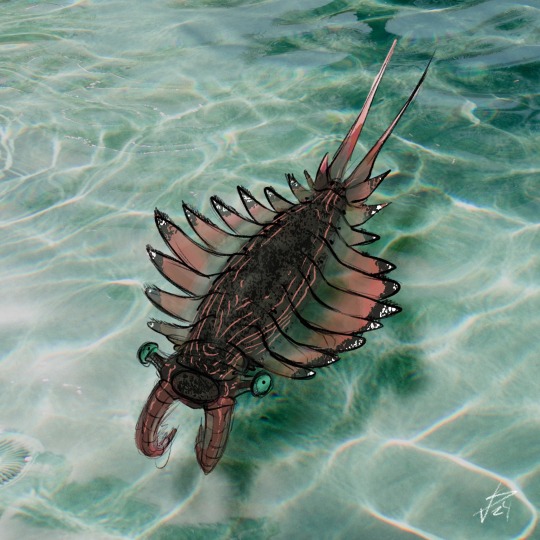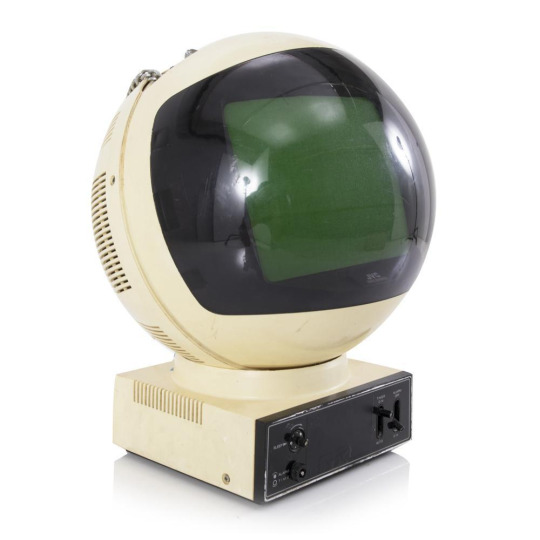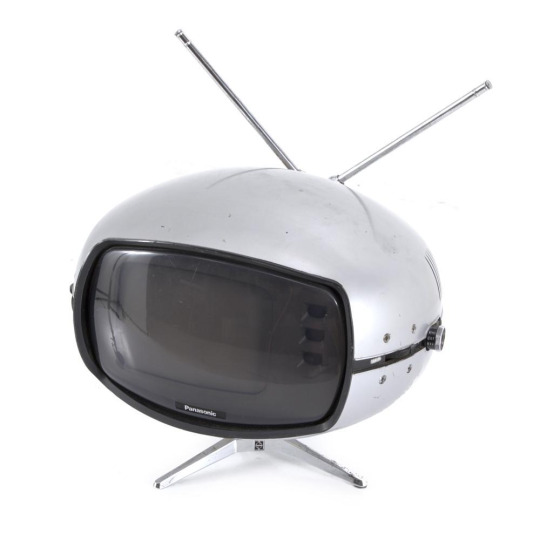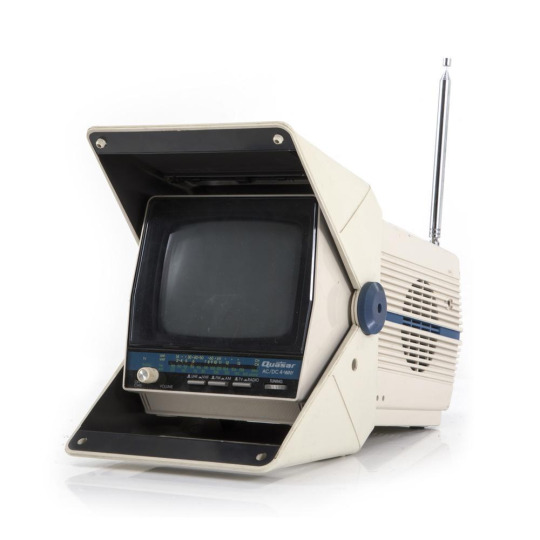Don't wanna be here? Send us removal request.
Text


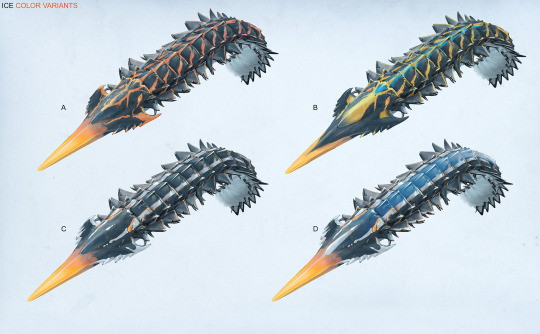
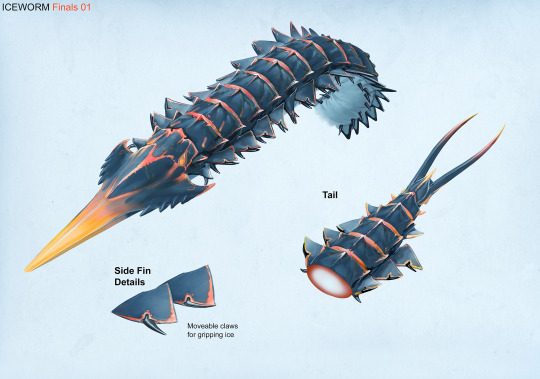
Our little nod to Shai-Hulud for Subnautica: Below Zero, the Ice Worm.
Its rostrum is biochemically heated, shattering the ice it moves through.
2K notes
·
View notes
Text
Always happy to lend a listening ear Amai! This system looks awesome, I'm happy to have allowed you to nerd out!
Worldbuilding My Magic System FOR REAL
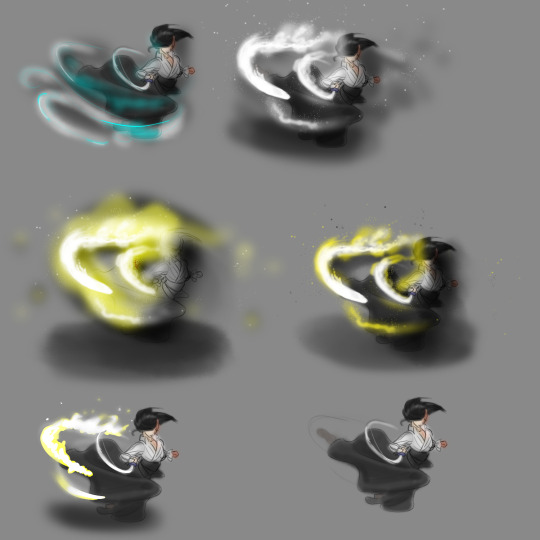
So Yssaia has HAD a pretty developed magic system for a while. And to recap it for you... I'm going to paste my half of me raving about this on Discord (thank you to @zebee-nyx and @galacticsand and @reaperofcrows for being so cool and letting me be an unhinged worldbuilding mad lad XD):
"What is Ysse?"
So the way Ysse works is its basically invisible dust floating in the air. And if it hits itself at certain velocities and in certain volumes, "spontaneous effects" happen -- like water materializing out of "nowhere" or fire exploding or wind gusts. You're limited a little by Avatar Last Airbender bending logic (you can't summon fully sapient creatures, you can't teleport, you can't control people's minds unless you're like... touching their nervous system, etc.)
So Mages invented the first writing as a way to record what patterns of movement did what. And eventually, used them to communicate these patterns as a shorthand for more generalized concepts...
So writing also got invented sometimes BEFORE agriculture...
"How precise do these movements/velocities need to be?"
It needs to be PRETTY precise. And this is why the average person CAN'T learn magic -- because Ysse in low amounts is invisible to the average person
But mages can see Ysse, which helps a lot. And they can see these shapes OCCURING in the natural world too -- when the wind blows, its because Ysse particles FORMED the Wind Rune/Sigil in the sky BUT this still doesn't guarantee that they cast any spells if they don't have the physical discipline too
So, in theory, "anyone" COULD move their hands PERFECTLY to spontaneously start a fire. But they PROBABLY won't
"How does this impact the natural world?"
This is also how animals and plants can do magic too. Tree roots in the north have roots that have specific patterns that warm up the soil, so snow can actually MELT and give them water and the tree doesn't die
And this is also my excuse for why so many things have bunny ears -- normally, long ears in colder-than-average climates (i.e. All of Yssaia) would be bad. But in Yssaia, these long ears are convergently evolving to channel Ysse. What they channel, exactly, I haven't decided (probably heat lol or something to increase air density so sound travels farther???)
AND all this is ALSO why the Demons are such an abomination -- because their Blood Magic doesn't obey particle physics, they just fucking do whatever they want
"Why do you need to know all this?"
The question at this point, I guess, is basically "How do I make fantasy technology that looks whimsical but also looks at least hypothetically functional under closer scrutiny?"
Yeah, and the full Answer TM to that right now is just <insert the entire design philosophy I haven't discovered yet here>
"So how IS magic going to shape technology, when you design it for the Untitled Yssaia Video Game?"
...Yeah, okay, after brainstorming all this, I think here's my strategy for how I'm going to tackle technology:
Step 1) Establish symbols for a handful of common things in both the North and the South that at least vaguely make sense with the concept of the particles So things like:
Step 1) Establish symbols for a handful of common things in both the North and the South that at least vaguely make sense with the concept of the particles So things like: - Fire/Heat - Water/Melt - Ice/Slow - Wind/Quicken - Earth/Apply Force - Sun/Light - Moon/Closing/Locking (Thanks to @zebee-nyx for this one!)
Step 2) Create a master list of technologies I will worry about/actually visualize in the game I will want to keep an OPEN LIST so I can add more things to it as I do research/find really specific use cases (such as scrollcases or chopstick holders)
Step 3) Design simple sprites for things that can later be shrunk down and used as set-dressing for maps BUT at a little bigger in scale so they can be shown to other people sensibly (maybe on the same sheet at the walking animations for scale?)
AND WITH THAT, after 5 years of only vaguely imagining all this, this is what I designed, using a combination of symbols I had already designed and dice that I pushed around on my desk to see what kind of patterns they'd make:
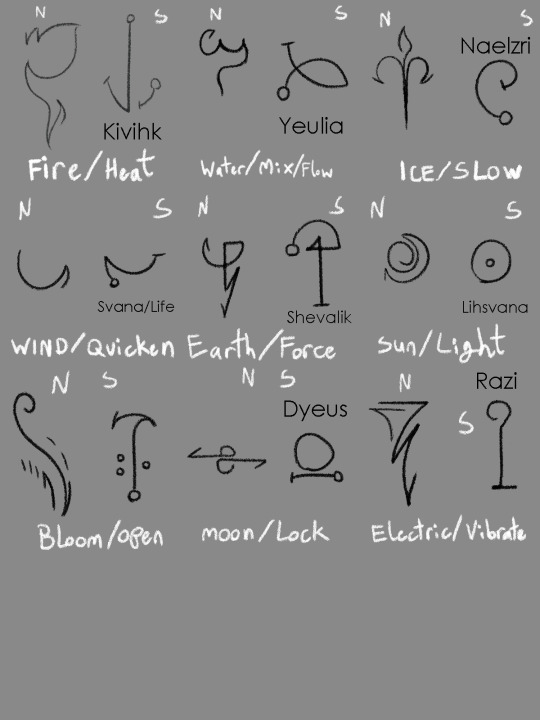
Are some of these a little funky and don't really work with real particle physics? Yeah, fair. I'll take notes, if you got 'em. I'm open to critique, if you wanna lol
Last comment that didn't make it into the big discussion with my buds tonight: Ysse particles are how temperature is distributed. So, hot areas have fewer, cold areas have more. I know that isn't how thermodynamics work but does anyone else really?
(Something something eldritch horror thermodynamics post... And my magic-god is an eldritch horror! See? It's perfect!)
Thank you for coming to my #WorldbuildingWednesday post! If you liked this, don't forget to REBLOG and follow the #Yssaia tag or something🥰 (Are calls-to-action cringe? Publicly shame me, if so)
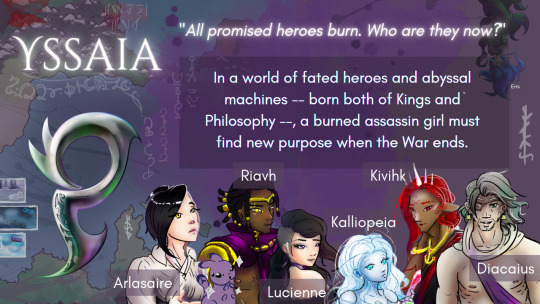
13 notes
·
View notes
Text
Coffeeconcotionoverdose Thingscript (CCOD-TS)

I am so scared all the time :D
14 notes
·
View notes
Text
I love this! Now complex math can have a secondary meaning!
Darkh Einsteinh

This is so cursed and I love it.
A script meant to mimic fucked up equations.
Note that the name of the script is written "[D_A_Rkh] [[Ei][Nst_Ei_Nh]]".
15 notes
·
View notes
Text

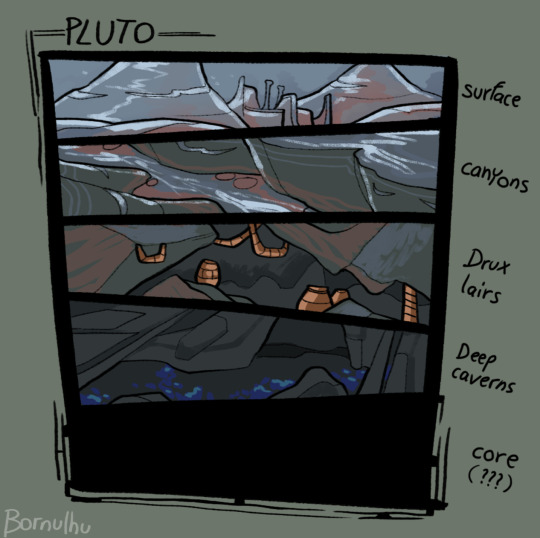
critters of Pluto. With a lot of the surface ravaged by old god Yibye-Guran, the mortal race of Druxulea hides and makes lairs underground. Deeper into the caverns lurk many other strange creatures. The core of the planet is forbidden territory, any Drux that ever ventured there never returned.
283 notes
·
View notes
Photo
Flat Earth quackery aside, this would make such a sick conworld map! I could totally see this being used for someone's ttrpg campaign... 👀

Flat Earth “Hidden Lands” Map which shows what the world may look like beyond the so-called “ice wall” of Antarctica.
9K notes
·
View notes
Text
Movelang #001 FU - Codifying the Syllable Structure
Nophhurra, and greetings! This post is a short follow-up to the previous one where I discuss some changes and determinations made in Movelang's syllable structure. After toying around with some base lexical material and words that I've coined, I now am much more confident about how the language's syllable structure looks.
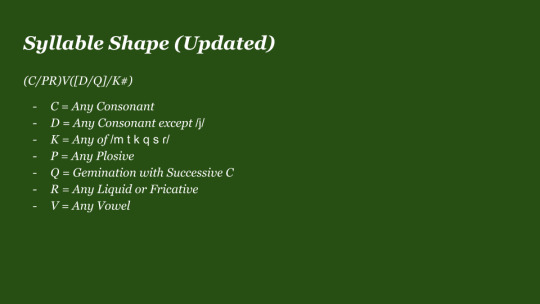
In the introductory phonology post, I intentionally left the phonotactics a bit vague, because at the time when I had initially codified the structure in my notes, I was more unsure of how syllables should look, whereas in the time since, I've been able to coin a handful of starter words and become much more certain about how syllables in Movelang look and behave. Since then it's only been a matter of reckoning the actual behavior in my notes, based on the words and common affixes I've begun coining and using.
As you can see, the structure has changed a tad bit to say the least, with this updated shape reflecting the shape common to all the syllables in my current initial set of words. Any syllable may begin with no consonant at all, any single onset consonant, or an allowed consonant cluster of a plosive + fricative, or plosive + liquid. Phonemic null onset also applies word-internally, and consequently, hiatus is also allowed phonemically. Syllables also have a few rules concerning what consonants may end a syllable, if one is present. Word-internally, any consonant may end a syllable, except for /j/, but word-finally, only a handful of consonants may end the final syllable, these being /m t k q s ɾ/. The one exception to the word-internal rule, is when there is a geminate consonant used as a simultaneous coda and onset, in which case, any consonant many end the syllable, as it also counts as the onset of the following syllable.
=-=-=-=
That's all I wish to say for now, until next time! The next full post concerning Noun Classes and the first showing-off of Movelang's Lexical Material is currently in the works, and should be out soon! I hope you all are as excited as I am, and until then, please feel free to ask any questions you may have! Cheers!
#conlang#conlanging#constructed language#conlangblr#experimental conlang#linguistics#phonology#phonotactics#galacticsand#follow up
3 notes
·
View notes
Text
Movelang #001 - Phonology and Sound System
Nophhurra, and hello again everyone! It's time for another post showing off my experimental conlang, Movelang! This time around, I'll be going over Movelang's sound system: the consonants and vowels used, along with a currently loosely-defined syllable structure, as well as allophony!

Admittedly, the Phonology has been one of the aspects of Movelang which has been altered several times over, and has gone through several iterations before reaching the point at which it exists in the present. Since the emphasis for this conlang was moreso on grammar than on the phonoaesthetic, I had largely loosely defined it at the start, with only a vague idea of what Movelang would sound like. At the start, I took a lot of inspiration from the Coptic Language, as well as several African and Caucasian Languages. Later on as I began being more deterministic about the phonetic inventory of the language, it did change from this original vision in several ways, but I ended up ultimately with something I really like!
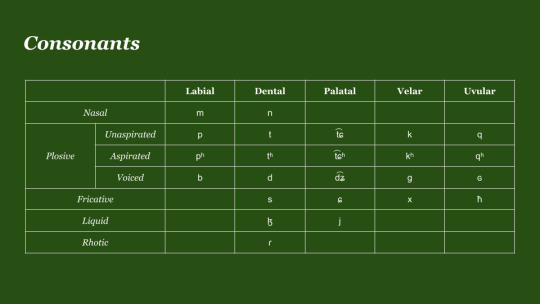
(My charts tend to prioritize neatness over exactness, so if there's a sound somewhere that doesn't exactly describe it completely correctly, please don't fight me 😭)
Phonemically, the consonant inventory consists of 2 nasals, 15 plosives, 4 fricatives, 2 liquids, and 1 tap. The plosives are split three ways by mode of articulation, where 5 stops are unaspirated: /p t t͡ɕ k q/, 5 stops are aspirated: /pʰ tʰ t͡ɕʰ kʰ qʰ/, and 5 are voiced: /b d d͡ʑ g ɢ/. Each mode of articulations contains a labial, dento-alveolar, palatal, velar, and uvular stop respectively. This was a choice inspired by both Ancient Greek, as well as the Coptic and Caucasian influence I mentioned earlier, and in an earlier version of the phonology, the palatal affricates were instead alveolar affricates: /t͡s t͡sʰ d͡z/. Accompanying the stops are 4 fricatives that roughly match 4/5 of the same manners of articulation: /s ɕ x ħ/. These were selected mainly for that reason, that they lie in the same POA as their stop counterparts, but I decided to throw in an oddball for the fricative furthest towards the back of the mouth. Originally, this was /h/ phonemically, but I was intrigued by Maltese's presence of /ħ/ as the sole voiceless fricative closest to the back of the mouth, so I decided to do this for Movelang, and I do love how it sounds! I personally think /x/ and /ħ/ pair nicely with each other! The Approximants and Nasals then weren't that hard to reckon, I simply filled in the gaps in the chart respectively. When I got to my /l/ sound though, I decided to make this a little bit different as well, and follow the lead of Mongolian, and make it /ɮ/ instead. I also made the decision to omit /w/ or any similar sound, since I have a habit of using this sound a lot whenever I make new sound systems, as a bit of a monkey-wrench to try and make myself work with.
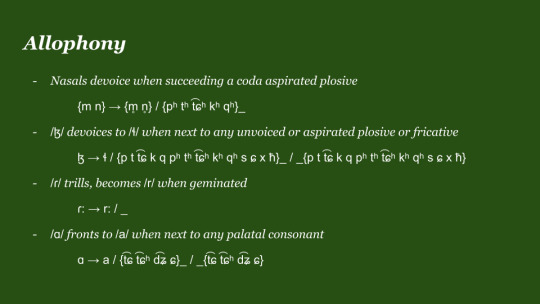
For Allophony, most of this deals with the pronunciation of consonants. There are 3 major rules that come into effect when pronouncing consonants in particular places within a word. First, the nasals, /m n/, devoice to /m̥ n̥/ whenever they are preceded by a syllable that has an aspirated plosive in the coda, any of /pʰ tʰ t͡ɕʰ kʰ qʰ/. Secondly, /ɮ/ may devoice to /ɬ/ when next to any voiceless sound: a voiceless plosive or fricative. Finally, the alveolar tap /ɾ/ becomes trilled /r/ when it is geminated. These rules as you'll notice mostly depend on a sound's locale within a syllable, which I'll explain in greater detail when discussing syllable structure...
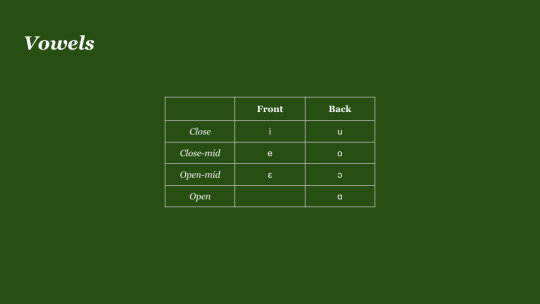
As for the vowels, these are quite simple. Movelang consists of seven phonemic vowels, which compliment the front and the back of the mouth. Movelang contains no phonemic length, tone, nasality, or anything else that would affect vowel quality in this way, at least phonemically, and only has these 7 plain oral vowels. There are 3 front vowels: /ɛ e i/, all of which are unrounded, and 4 back vowels: /ɑ ɔ o u/, all of which are rounded, except for the open back vowel.
In terms of vowel allophony, nothing really major happens to vowels. The only major rule which takes place with vowels, is that /ɑ/ goes to /a/ when near a palatal sound.

Additionally, the syllable shape in Movelang is pretty straightforward, it's pretty much CVC, but with a few additional caveats. The main difference, is that /j/ cannot be a coda consonant, which is reflected by the use of D for the coda consonant in my syllable shape notation, and additionally, only 6 consonants can end a word: /m t k q s r/, which is reflected by the use of K for a word-final coda consonant.
In addition to these tactical features, hiatus is permitted in Movelang, meaning that the onset consonant in syllables is optional even word-internally, and when this happens, the parallel vowels flow together smoothly, rather than having some epenthetic consonant placed between them, like a glottal stop. Gemination also happens quite frequently in Movelang, especially in compounds, and it is under these circumstances when /j/ technically can appear in the coda of a syllable, but only as a part of a geminate /j:/.
=-=-=-=
Alright! Well, that's pretty much it for phonology, at this point I'm going to try and stick to this phonology and not impulsively change it again, but knowing me, I can't make any promises XD. I hope you all enjoyed this look at the sound system! I look forward to posting some lexical samples in the next post, with these sounds intact, where I'll be showing you Movelang's class system in action! More on that later of course... Until then, I look forward to it, and I hope you all enjoyed this post! If you all have any questions, feel free to leave me a comment, or an ask!
8 notes
·
View notes
Text
Movelang #000 - Introduction to the Language and Noun Class System
Nophhurra, my friends! Today I begin a series of posts showcasing an experimental conlang that I've been working on now and tinkering with for just over a year. At the moment, this language does not have a name in-conlang, and so I'll be referring to it for the time being by the language's project name "Movelang". Originally this language came about as the result of an idea that I wanted to experiment with in a conlang, and the language has since solidified and expanded in more ways than one. In this post, I'll be introducing you all to Movelang, along with the goals that I have since codified for it. As it stands, this language currently holds no connection to my Personal Conworld Project, as it is currently only an experiment, and I don't see it being adapted in any way for it, at least for the time being, but who knows, that could change one day!

The origins of Movelang lay in a discord server that I was and still am actively a part of. At the time, a group of us were discussing neat and nontrivial noun class systems that could potentially be used in a conlang, and one of us (I can't remember exactly who right now, but I do know it wasn't me), suggested an idea for a noun class system that is based on the mode by which nouns in question would be transported or moved around. We all loved this idea right away, and we set originally to put together a server collaborative conlang to implement this idea. After some time passed though, the project fell into obscurity, but I still found this idea to be super cool, and wanted to experiment with it further, and so I ended up stealing the idea, and building it into my own personal experimental piece!
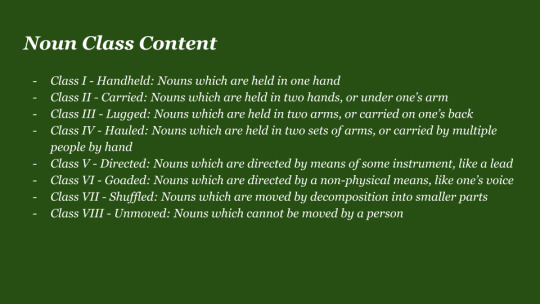
The resulting noun class system shown above is what I ended up with after reconsidering the original class system that we had come up with together. The system I devised consists of 8 noun classes, a slight upgrade from what had originally been 6 more broad classes, which are distinguished by a mode of moving, carrying, or transport used for associated nouns in the appropriate class. I also gave each class a cool name that reflects the mode of movement associated with it as well! The class definitions are of course broad as well, as is the case with all languages that make use of noun classes, and not all nouns that fit into one of these classes will follow the category specified for each one.
In terms of goals, my primary goal was of course to implement the cool noun class concept that the group I was in had originally devised: to set up noun classes based on mode of movement for prospective nouns. Aside from this, my intention is also to experiment with a couple of other aspects of conlanging that I had been wanting to use hitherto. One of the big ones is being able to create a lot from a little in terms of derivations, which I've been able to do for the most part already, in addition to a loose adherence to naturalism, which hasn't been as big of a goal for me with this being an experiment, as already mentioned, but has helped me to keep the language looking plausibly realistic for the most part.
As I continue sharing more bits and pieces with you all about Movelang, I hope to show you how I've been able to adhere to these goals as its development has moved forward, slowly but surely, and I can't want to show you all what I've made very soon!
=-=-=-=
This is my first big post to the blog, and my thoughts can sometimes be all over the place, especially if I'm super excited, so do let me know if you'd like me to clarify anything mentioned here. Feel free to drop me an ask and I'll answer it whenever I find the time if it adds to the post! Who knows, maybe I'll even give a sneak peak of what I have to come later, if it's particularly relevant... Until then, hope you all are as excited as I am! :D
#conlang#conlanging#intro post#introduction#constructed language#galacticsand#experimental conlang#linguistics
8 notes
·
View notes
Text
An Introductory Post
Hello World, and all who inhabit it! Nopphurra! Mnis Kham!
I go by many names in many different places, but here on the internet I'm known as GalacticSand, or more simply as Galactic. I've personally found myself invested in many different interests to varying degrees over time, foremost among them now are Computer Science, Writing, Math, Linguistics, Worldbuilding, and Conlanging! In my spare time, I enjoy tinkering with small programs and side projects, as well as making contributions little-by-little to my Personal Conworld Project!
As I'm writing this post, my conworld is not super developed, but I hope to change that with some of what I post on this blog! I hope to be able to share my ramblings, brainstorming, and developments of what I make with some of you all here, and show you what goes on idling in my mind a lot of the time. I don't intend on posting here regularly though, so I expect that my ideas will come here in bursts of inspiration, along with the somewhat regular reposts of anything I find inspiring or connective in some way. Aside from these I'll probably also do the same for small things related to my other interests and projects, so stay tuned!
That being said, I hope you all feel welcome here! Feel free to have a look around and enjoy my little slice of the pie. Don't be shy to stop by and say "hi"!

#intro post#blog intro#conlang#worldbuilding#galacticsand#writing#brainstorm#conworld#constructed language
5 notes
·
View notes
Text
Oh dear... this means I have to marry the Mandelbrot Set, how does that work? XD

Who is it?💕
60K notes
·
View notes
Text

mmm Spinosaurus aegyptiacus.
Getting back in the swing of paleoart. it’s been about two years since i’ve done it but i’m pretty proud of this one
this is probably super inaccurate and i’m ok with that. not a paleontologist so take this with a grain of salt.
77 notes
·
View notes
Text

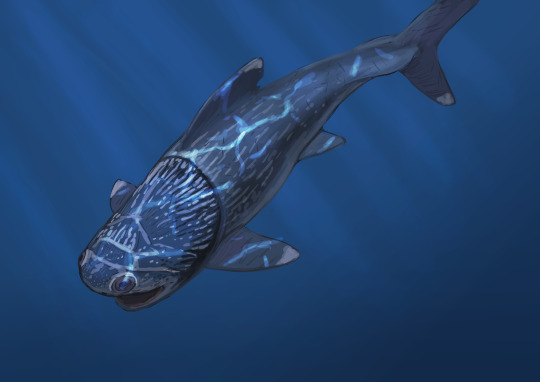

The amount of interesting research about placoderms in recent years gives me life.
They are such goobers.
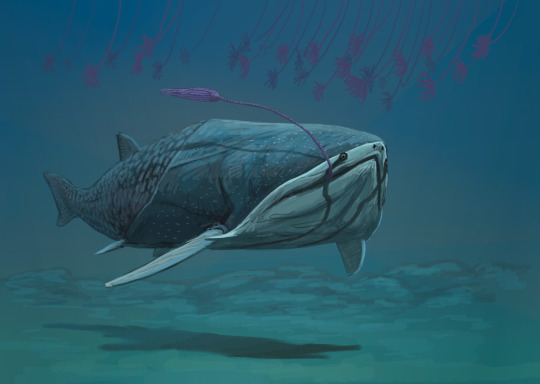
Dunkleostes, Amazichthys, Alienacanthus and Entelognathus
4K notes
·
View notes
Text
You guys rlly don't realise how much knowledge is still not committed to the internet. I find books all the time with stuff that is impossible to find through a search engine- most people do not put their magnum opus research online for free and the more niche a skill is the less likely you are to have people who will leak those books online. (Nevermind all the books written prior to the internet that have knowledge that is not considered "relevant" enough to digitise).
Whenever people say that we r growing up with all the world's knowledge at our fingertips...it's not necessarily true. Is the amount of knowledge online potentially infinite? Yes. Is it all knowledge? No. You will be surprised at the niche things you can discover at a local archive or library.
87K notes
·
View notes
Note
In honor of Worldbuilding Wednesday... How do you present your worldbuilding to your audience without overwhelming or boring them? What techniques do you use?
Oooh, that's a great question!
Apologies for getting to this very late, but I would like to answer this now, on a successive Worldbuilding Wednesday!
This question has also come to my attention at the perfect time funnily enough, as a good chunk of my present worldbuilding up to this point has been Cosmological and Ontological in nature, that is, describing the nature of the formation and structure of the universe (or in my case, the multiverse), as well as the nature of life and living beings which inhabit several different worlds, including the present one to which I've dedicated the majority of my attention hitherto.
This naturally comes with the formation of several ideas and concepts that have been easy and neat for me personally to come up with, but aren't always the cleanest for me to explain to someone else, especially when seeking advice or when doing some spitballing.
Most of the time I typically find it helpful to use analogies when explaining certain things about this specific category of worldbuilding, more specifically I find myself using comparisons of systems and theories, as well as frames of thought that exist irl. This is particularly easy since I take much of my cosmology from many real-life sources and inspirations anyway!
In line with this principle, I also take inspiration from referencing the worldbuilding of others! And so, existing within the same shared interest space of worldbuilding is super helpful in this way, because I can reference worldbuilding which other people are already familiar with when constructing my own!
Outside of cosmology, since I generally already exist in a space filled with fellow worldbuilders and conlangers who already tend to nerd out over subjects like linguistics, biology, and the like, more often than not I can usually reference specific animals and languages, in the cases of speculative biology and conlanging respectively, as well as known artifacts in our world, as reference points to compare my own work.
I hope this answers your question! Thanks so much for asking!
Edit: Just realized today is Thursday, not Wednesday... Welp, I was almost right :P
3 notes
·
View notes
